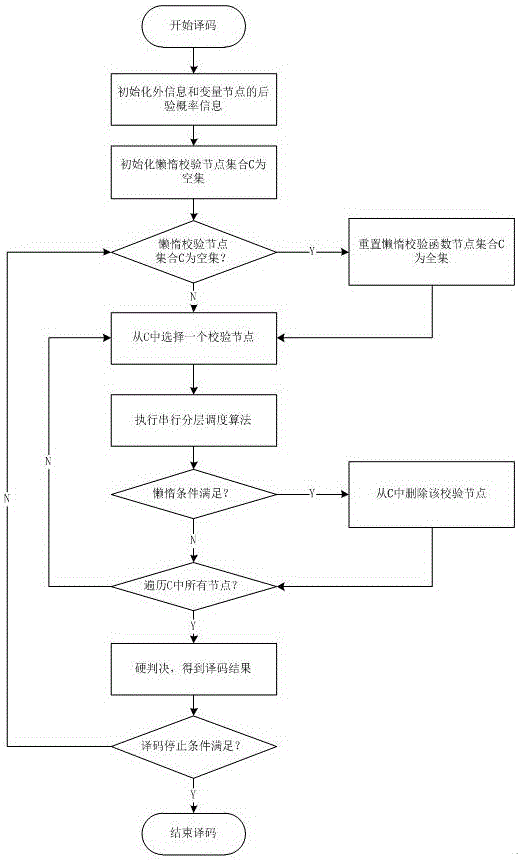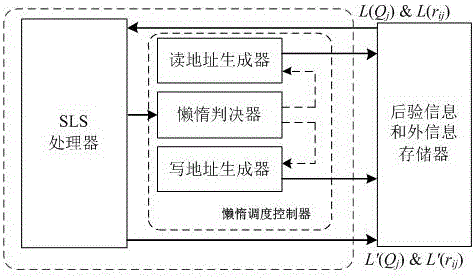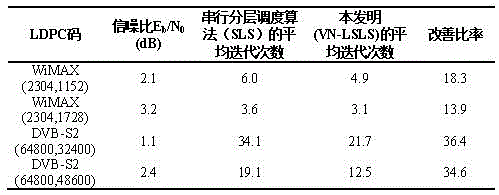LDPC (Low-Density Parity-Check) decoding algorithm based on variable-node lazy serial layered scheduling
A variable node, hierarchical scheduling technology, applied in the field of low-density parity-check code decoding algorithms, can solve the problems of high delay and power consumption, slow convergence, etc., to reduce delay, power consumption, and improve error The effect of code performance
- Summary
- Abstract
- Description
- Claims
- Application Information
AI Technical Summary
Problems solved by technology
Method used
Image
Examples
Embodiment Construction
[0045] LDPC code decoding algorithm among the present invention can be realized in FPGA platform, figure 2 The functional block diagram of its realization is given. The decoder includes a serial hierarchical scheduling processor (SLS processor), a lazy scheduling controller, a posteriori information (L(Q j )) and extrinsic information (L(r ij)) memory. The serial hierarchical scheduling processor (SLS processor) updates the posterior information of the variable nodes adjacent to the check node according to the posterior information and extrinsic information, and its process is consistent with the traditional serial hierarchical scheduling algorithm, and generates intermediate variables min(i) and smin(i) for the lazy scheduling controller to make decisions. The lazy scheduling controller includes a read address generator, a write address generator and a lazy judger. The lazy judger judges whether a certain variable node satisfies the lazy judgment condition according to t...
PUM
 Login to View More
Login to View More Abstract
Description
Claims
Application Information
 Login to View More
Login to View More - R&D
- Intellectual Property
- Life Sciences
- Materials
- Tech Scout
- Unparalleled Data Quality
- Higher Quality Content
- 60% Fewer Hallucinations
Browse by: Latest US Patents, China's latest patents, Technical Efficacy Thesaurus, Application Domain, Technology Topic, Popular Technical Reports.
© 2025 PatSnap. All rights reserved.Legal|Privacy policy|Modern Slavery Act Transparency Statement|Sitemap|About US| Contact US: help@patsnap.com



